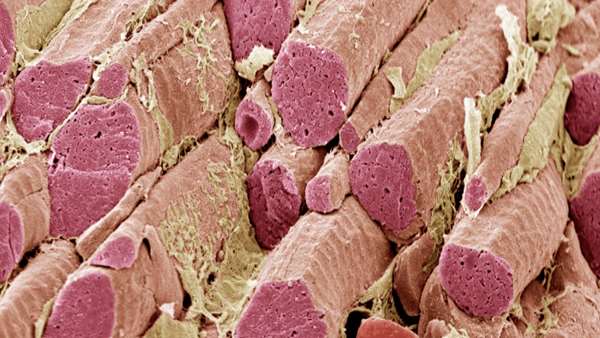In efforts to restore muscle lost, researchers from Wake Forest Institute for Regenerative Medicine (NC, USA), Sungkyunkwan University (Seoul, South Korea) and Chonnam National University (Gwangju, South Korea) have developed an efficient bioengineering technique for muscle regeneration and functional restoration in injured rats. The results of their study are published in Applied Physics Reviews.
Often in the absence of fully effective reconstructive procedures for bioengineering skeletal muscles, loss of muscle as a result of trauma, illness or injury can result in permanent damage.
Expanding on their previously developed method using muscle-specific materials derived from tissues (dECM-MA) to construct bioinks, an interinstitutional group has worked to combine biochemical and topographical cues to address this issue.
The team combined dECM-MA from pigs’ skeletal muscles with poly(vinyl alcohol) (PVA) fibrillation to discover cues to the molecules in the bioink that would guide them to their target tissue and ensure they are properly aligned. By optimizing the PVA to enable stable, viable and well-aligned cell structures, the researchers observed improvements in muscle regeneration and function restoration.
“One major benefit over previous approaches is the self-alignment of muscle cells in the 3D structure without any supporting components,” explained Sang Jin Lee, one of the authors. “This could allow us to fabricate more clinically relevant bioengineered muscle constructs.”
Upon testing the technique on rats with injured muscles in their feet, the team observed that rats treated with the novel technique displayed over 80% muscle function restoration compared with uninjured rats of the same age and rats with the same injury but no treatment. Further, the bioengineered muscles integrated well with the rats’ neural and vascular systems.
These results suggest that combining dECM-MA with PVA could offer a clinical solution for achieving large-scale tissue regeneration.
“This advanced bioprinting approach for bioengineering functional skeletal muscle constructs may be an effective therapeutic option for treating extensive muscle defect injuries with accelerated innervation and vascularization,” commented Lee.
The team anticipate some difficulties in translating this technology to the clinic, as it requires obtaining cells from the patient. In the meantime, they are planning further preclinical trials on larger, more clinically relevant muscle constructs in larger animals.
SOURCE
Lee H, Kim W, Lee J et al. Self-aligned myofibers in 3D bioprinted extracellular matrix-based construct accelerate skeletal muscle function restoration. Appl. Phys. Rev. 8, 02145 (2021).
https://www.regmednet.com/novel-bioengineering-approach-could-aid-muscle-regeneration/




ارسال به دوستان